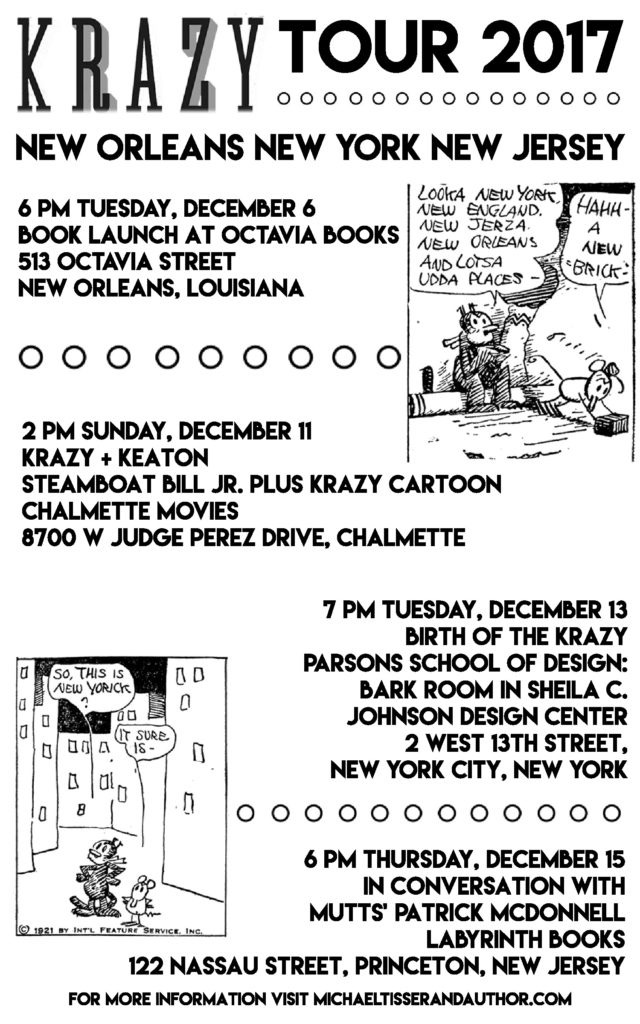Still ‘Krazy’ after all these years: A life of George Herriman, pioneering comic writer and N.O. exilePosted in Articles, Arts, Biography, Louisiana, Media Archive, Passing, United States on 2016-12-30 23:17Z by Steven |
The New Orleans Advocate
2016-12-05
Susan Larson, Host, The Reading Life
WWNO-FM, New Orleans
 George Herriman, from Michael Tisserand’s Krazy Kat bio of George Herriman |
For Michael Tisserand, as for most of us, the love of comics came early in childhood.
His mother took him to the library, where he discovered 741.59, the beloved Dewey Decimal System classification where comics were shelved. Years later, during his post-Katrina exile in Chicago, Tisserand would take his own young son to an exhibit of comics at the Milwaukee Art Museum.
“I was carrying my son in my arms then — he’s 6′-4″ now — and reading the captions out loud. I was feeling the New Orleans exile at that point, and I could imagine the way Herriman felt as a 10 year-old in Los Angeles, and I was looking for a New Orleans story. This was a story about New Orleans that I could tell from Chicago.”
Now, years after chasing the story across the country, Tisserand has produced the first full-length biography of a great New Orleans character and an original American artist in “Krazy: George Herriman, A Life in Black and White” (HarperCollins, $35).
Herriman (1880-1944) was born in New Orleans to a Creole family, free people of color who moved to California in search of better educational opportunities. There, Herriman began to pass as white, which he did for the rest of his life…
Read the entire article here.




